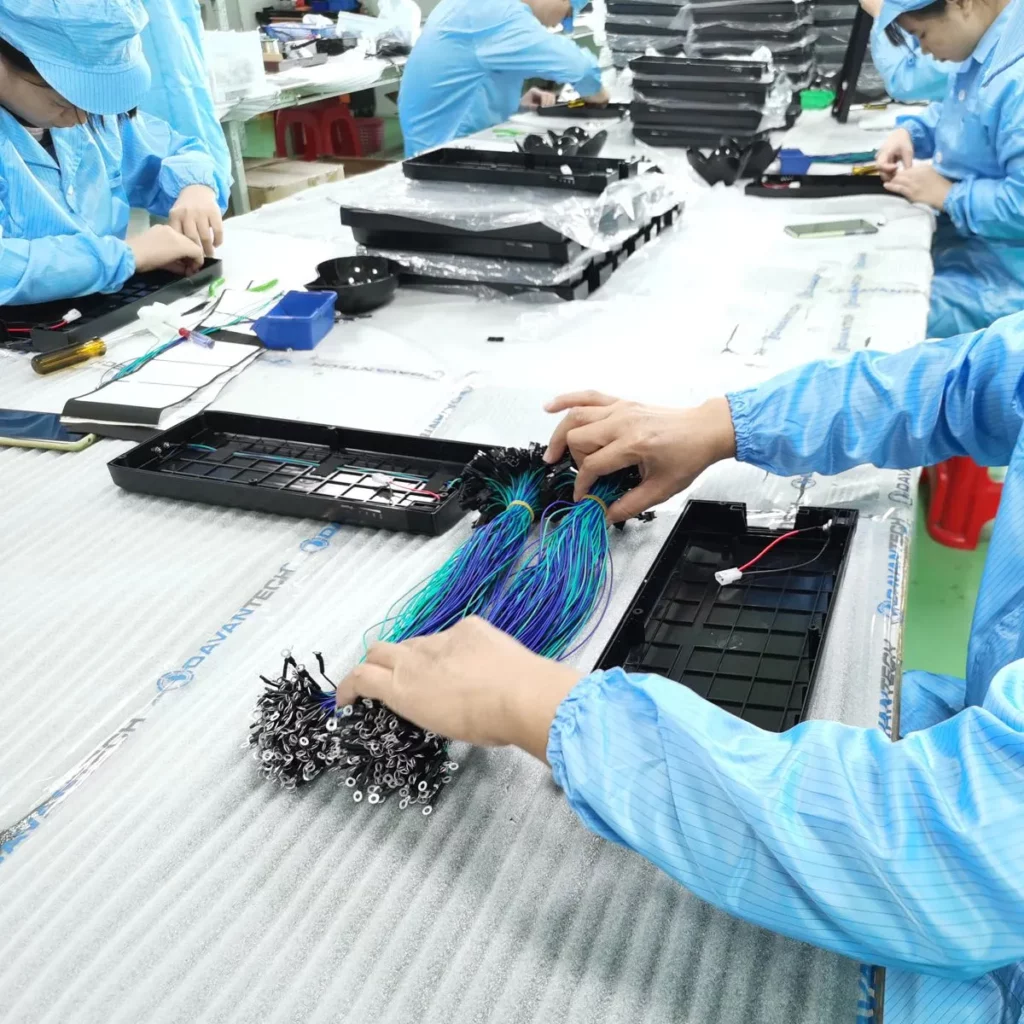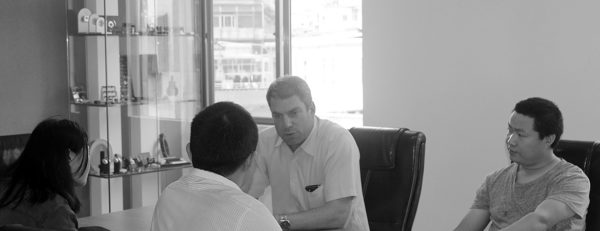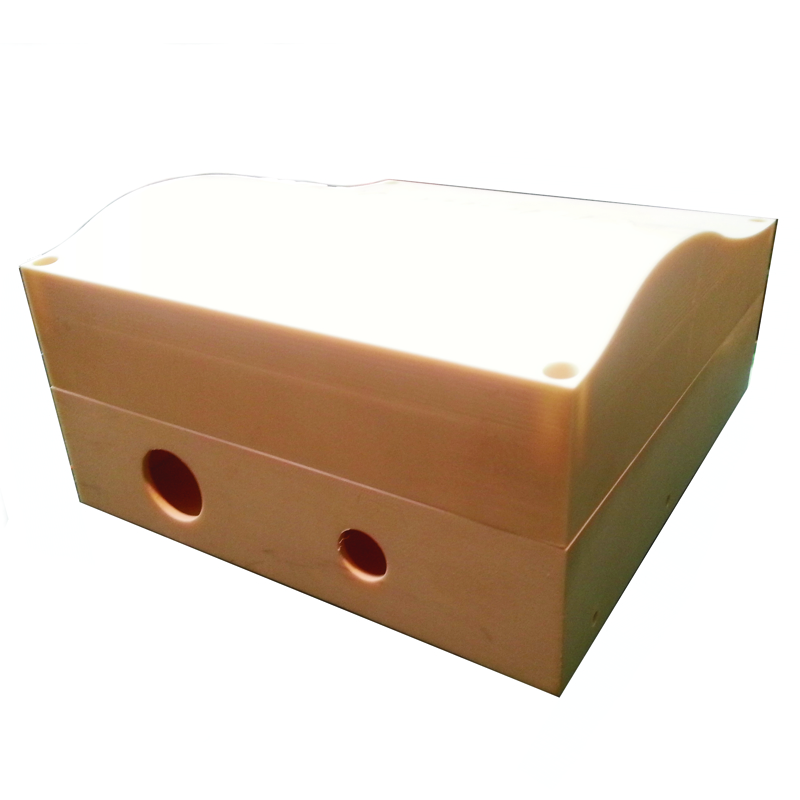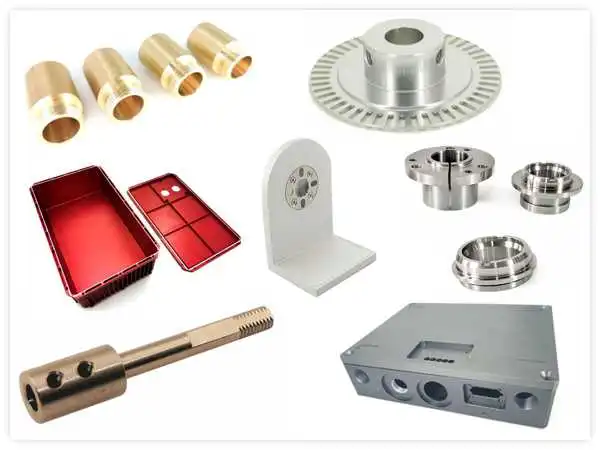Machined parts are components or objects that have been manufactured through a process known as machining. More specific, machining involves the removal of material, called chips, from a workpiece. Therefore we use various cutting tools and techniques to shape it into a desired form or achieve specific dimensions.
We use a wide range of materials to produce machined parts, including metals, plastics, and even wood. The process typically involves using machine tools such as lathes, milling machines, drilling machines, and wire cutting machines to perform precise cutting, shaping, and finishing operations.
There are different types of machining processes used to create machined parts. Some common techniques include:
- Turning: This involves rotating the workpiece while a cutting tool removes material to create cylindrical shapes like shafts, rods, and discs.
- Milling: Here, a rotating multi-point cutting tool removes material from the workpiece to create various shapes, slots, and features. It is often used to produce flat surfaces and complex geometries.
- Drilling: This process creates holes in the workpiece using a rotating drill bit.
- Reaming: We use reamers to create holes with specific tolerances. Therefore, each reamer can only be used to obtain one desired tolerance. Or we can use adjustable reamers.
- Tapping: Tapping is a process of creating Metrical thread or threaded holes following another standard.
- Wire cutting: Electricity at high voltage sparks from a metal wire to the workpiece in order to cut the desired pockets.
Machined parts find applications in various industries, including automotive, aerospace, electronics, medical devices, and manufacturing. As such, they are crucial components in the production of machinery, equipment, tools, and consumer products where precise dimensions, tolerances, and quality are required.
- CNC milling and turning controlled by a computer
- Conventional processing: machines are operated by hand and not by a computer.
- Drilling, reaming and tapping
- Wire cutting
Milling
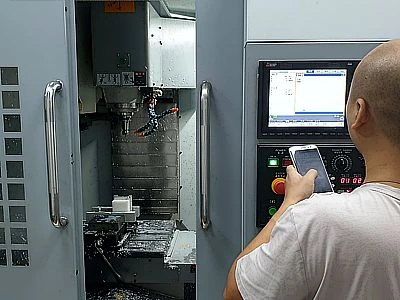
Turning
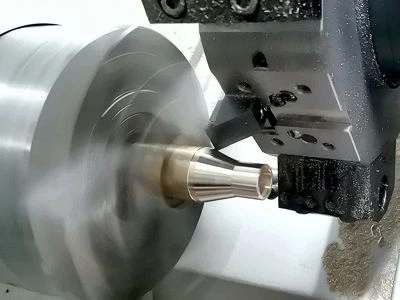
Drilling
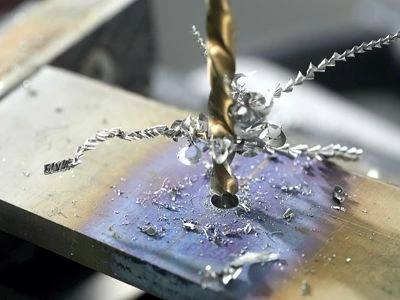
Tapping
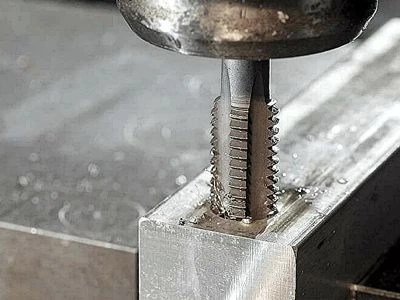
Reaming
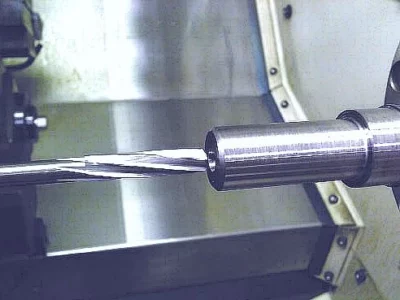
Wire cutting
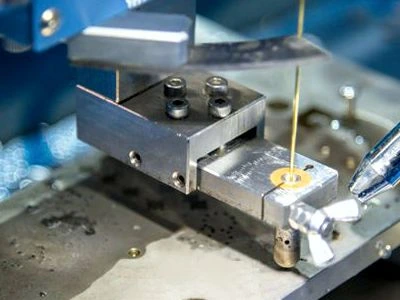
What are machined parts used for?
We use machined components everywhere. Look around you and take a look inside devices and machinery. Open the hull of your car. The engine consists of hundreds of parts, for instance. milled and turned components find their way in a broad range of applications. Each milled component has its reason and function in an assembly. We use CNC machining to fabricate as enclosures and housings, covers, fixation elements, mounting brackets, electric components and PCB’s (cfr Heatsinks, connector pins) and mechanical parts such as gears and axles. They are all part of a bigger unit. A plane, a car, machinery, a lock, an electronic device.
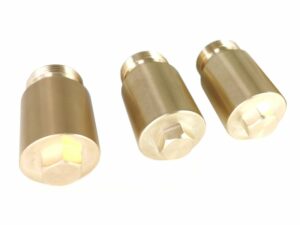
What are the advantages of machined parts?
There are several advantages of machined parts compared to other ways of manufacturing.
1. Prototype machining
In order to evaluate a new design, it is relatively easy to make prototype parts. There is no investment in tools and molds needed. The total cost of machined prototypes is low.
2.Quantity
Whether you need 1 or 10000 pieces, machining does the job. However, some different mass production techniques could reduce scrap material and as such induce a lower unit cost. In this case we talk about molds.
3.Design possibilities
Taking in account some basic design rules for fabricating parts, the freedom of designing machined parts is huge. More specific, it allows all kinds of shapes, even curved surfaces.
4.Derivatives
Product designs often change during the lifetime of a product. Component updates result in modifications. When CNC fabricating, there is more flexibility to modify parts throughout the manufacturing process or even after a series is finished. There is not such flexibility when using molds, for example.
5.Relatively fast fabrication process
Milling and turning are relatively fast manufacturing processes. The fabrication of machined parts starts right away. Whereas for injection molding there first is the production phase of the mold.
